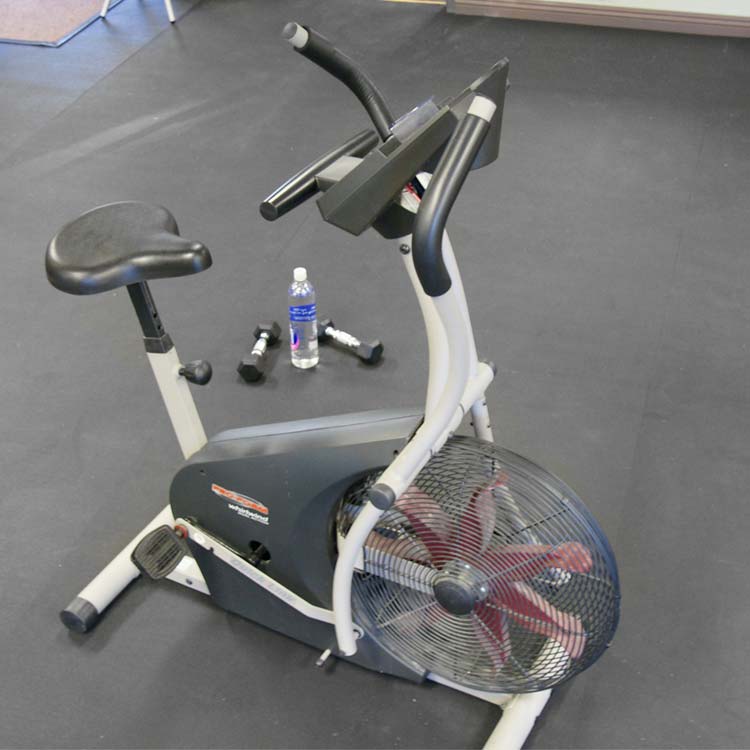 The “Vulcan mind meld” — once the sole territory of dedicated “Trekkies,” this pop culture reference has become a phrase widely used by many Americans. Even people who have never seen the original Star Trek series throw the phrase into casual conversation to describe an intimate spiritual experience, a meeting of minds so intense that it can only be supernatural.
The “Vulcan mind meld” — once the sole territory of dedicated “Trekkies,” this pop culture reference has become a phrase widely used by many Americans. Even people who have never seen the original Star Trek series throw the phrase into casual conversation to describe an intimate spiritual experience, a meeting of minds so intense that it can only be supernatural.
For key players in the business of recycled tire rubber flooring, the “devulcanization” of rubber has another meaning entirely. Devulcanization is a popular method of recycling rubber vehicle tires and other non-biodegradable rubber products. In order to make new products, rubber tires must have their rubber, metal, fabric, and other parts removed and separated. Recycled tire rubber is now prepped to be refined into crumb rubber or readied to be devulcanized. It can then be devulcanized, making them malleable enough to form into new rubber products, like recycled tire mats.
To understand devulcanization, let’s start by first summing up the vulcanization process. Vulcanization is a chemical process that transforms natural rubber into a longer lasting and more resilient material. Natural rubber sap is treated with durations of intense heat combined with sulfur and peroxides (Wikipedia). The resulting material is a tough rubber used in rubber flooring products because it can handle inclement weather and other abrasive environments.
Devulcanization, as the name implies, reverses the vulcanization process in order to recycle and reuse the material as reclaimed flooring. There are several ways to devulcanize rubber. Some methods use chemicals to undo the process, while others use ultrasonic energy, microwave technology, or microorganisms to reverse the chemical changes made to the base natural rubber (Wikipedia).
 Chemical devulcanization, for example, requires a mixture of solvents and ground up rubber, or crumb rubber. The mixture is set at a specific temperature and pressure which chemically severs carbon-sulfur and sulfur-sulfur bonds within the rubber (Wikipedia).
Chemical devulcanization, for example, requires a mixture of solvents and ground up rubber, or crumb rubber. The mixture is set at a specific temperature and pressure which chemically severs carbon-sulfur and sulfur-sulfur bonds within the rubber (Wikipedia).
The efficiency of rubber devulcanization differs depending on the method used. For most materials found in reclaimed flooring made from rubber, the overall goal of devulcanization is to restore vulcanized rubber to its original, natural form. Then, the devulcanized rubber can be reintroduced into the manufacturing process and potentially re-vulcanized at a later date. Reclaimed rubber mats and flooring are a popular way to reintroduce used rubber products back into consumer products.
In many ways, devulcanization is the process of returning to nature — one of the foundations of the eco-friendly movement. By reusing vulcanized rubber, recycled tire mats and flooring participate in the process of waste conservation and recycling that helps to shape the rubber flooring industry. Due to the nature of devulcanization and the durability of rubber vehicle tires, recycled tire rubber flooring is one of the most resilient flooring options available today. Products made from recycled tire rubber are durable, weather resistant, and ideal for most abrasive applications.
For Star Trek fans and environmentalists alike, rubber devulcanization is an extremely beneficial process. What other manufacturing processes save waste and nullify extraneous costs in quite the same way? Rubber is one of the most versatile materials on the market.
As devulcanization is refined and the rubber industry develops, recycled tire rubber flooring will come to the forefront as some of the most useful reclaimed flooring products. With the help of devulcanization, recycled tire mats can offer durable, eco-friendly floor protection at affordable prices, far less expensive than natural (tree derived) or synthetic rubber products.